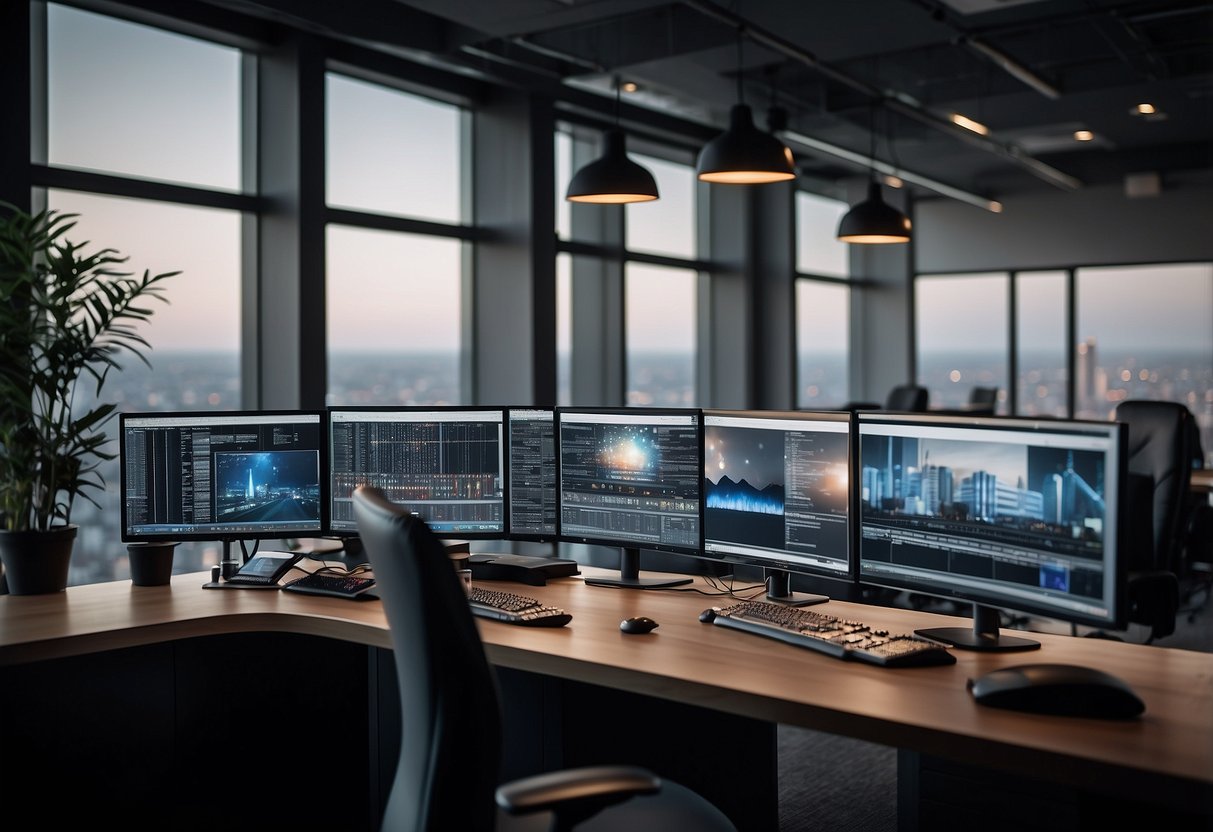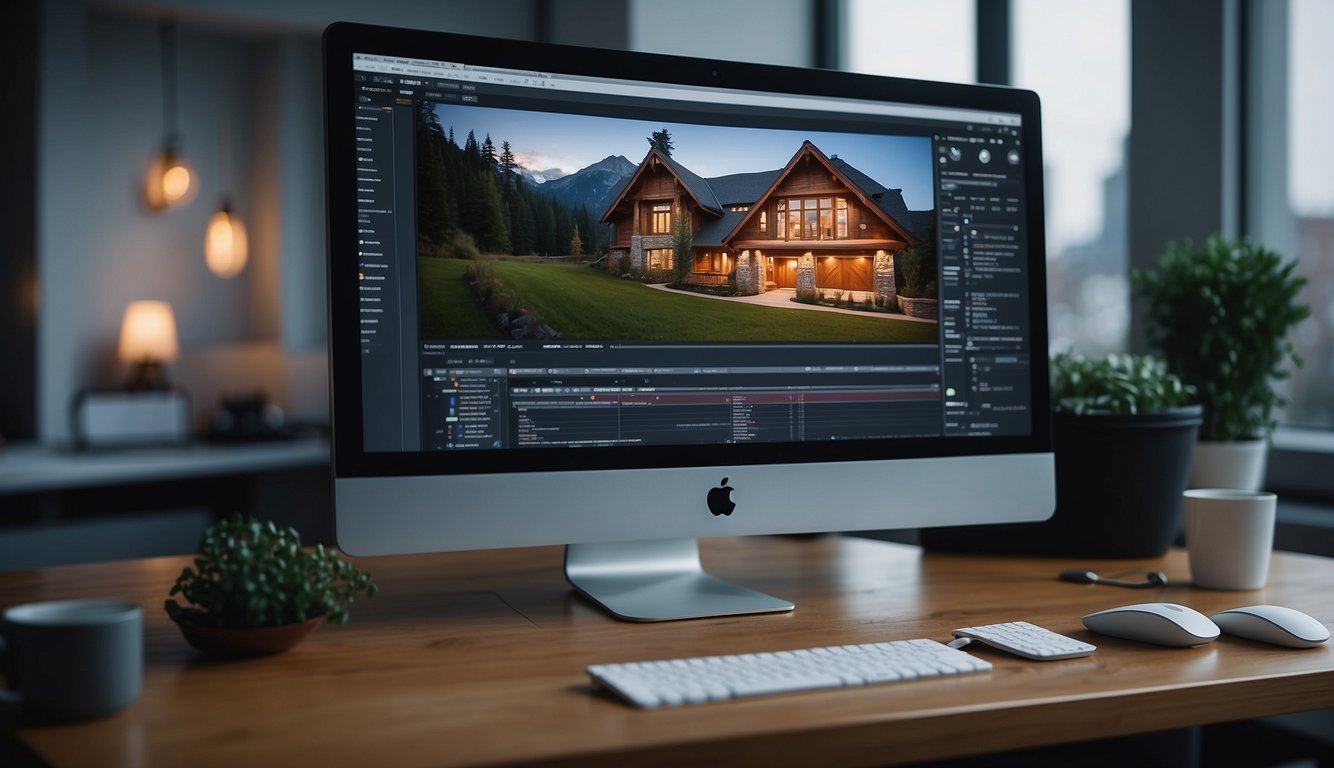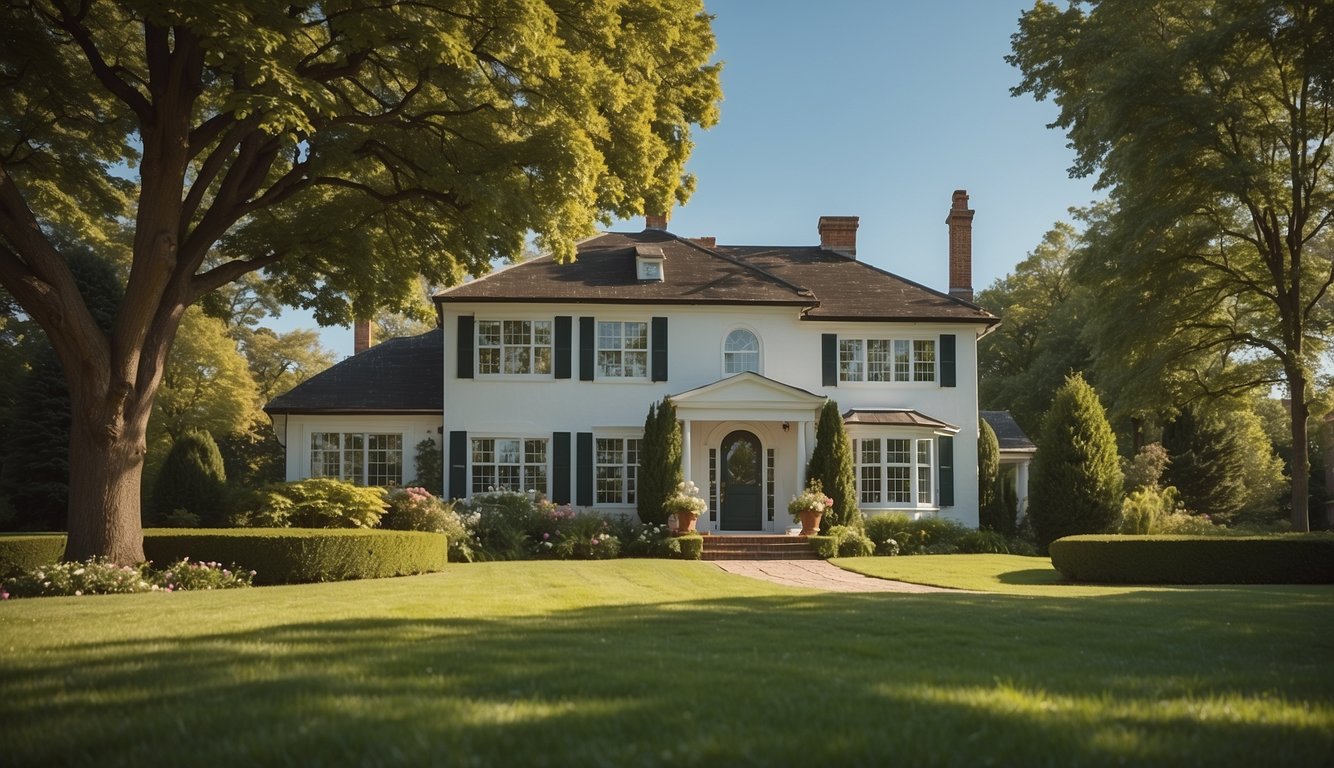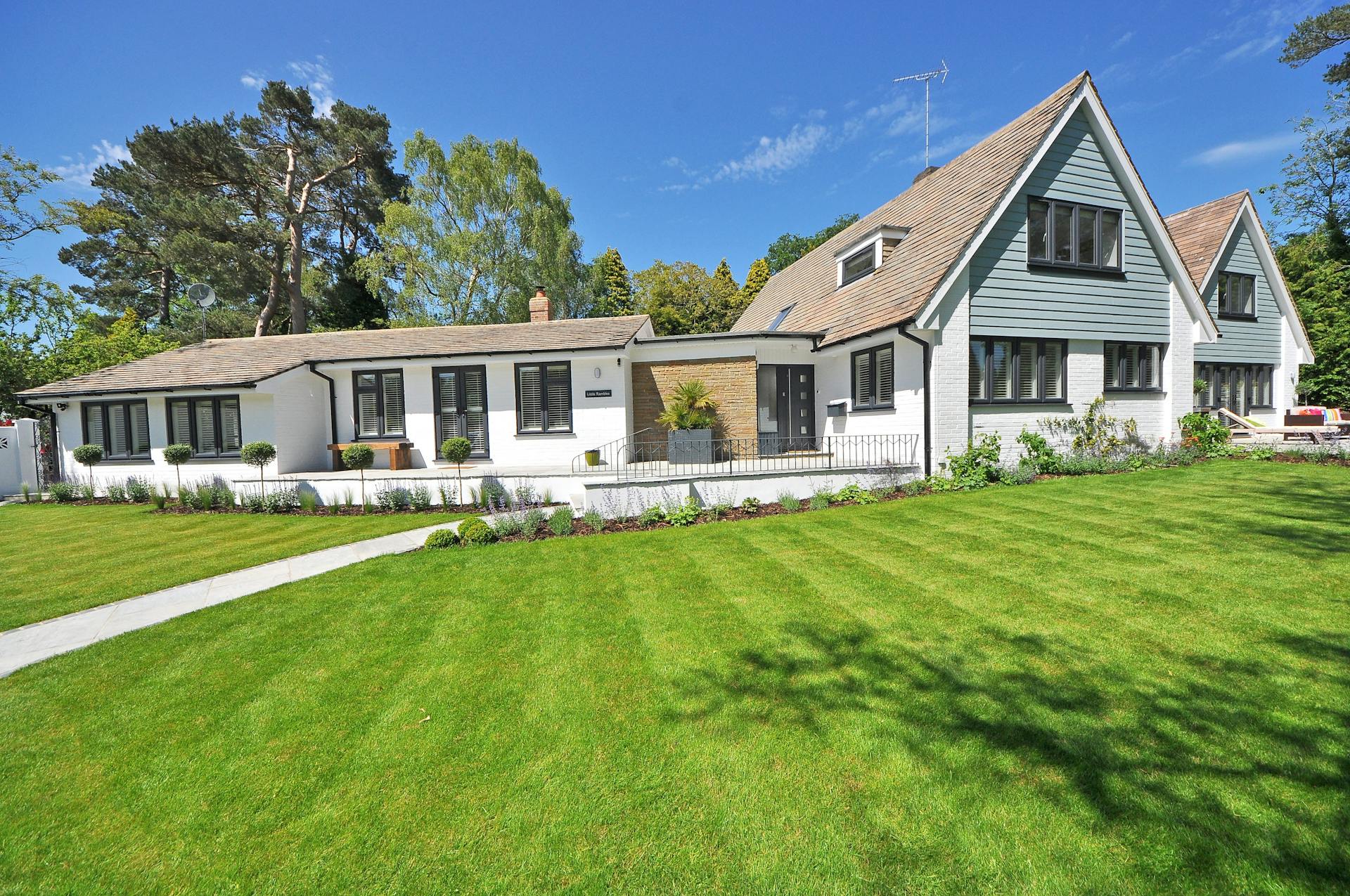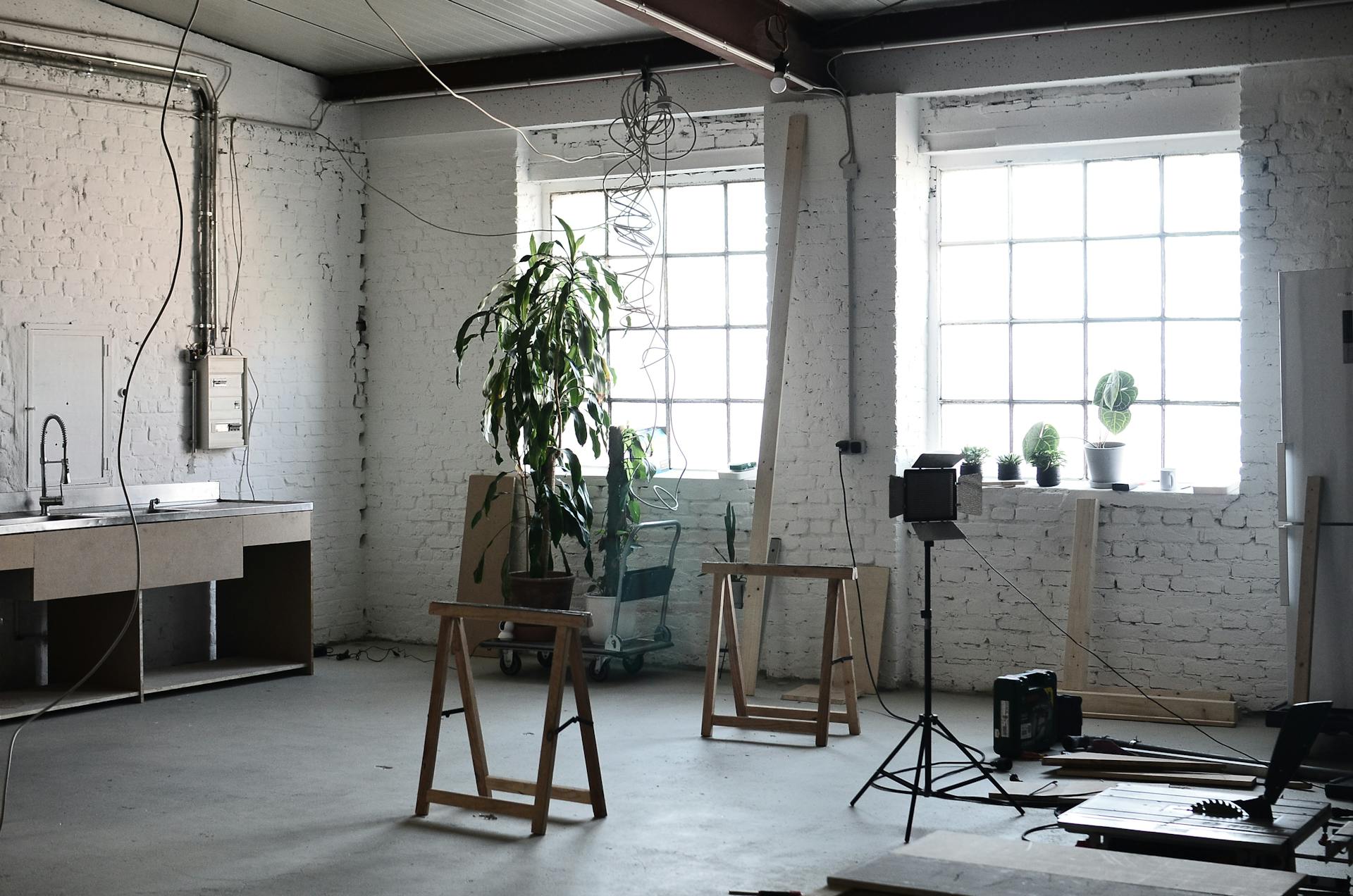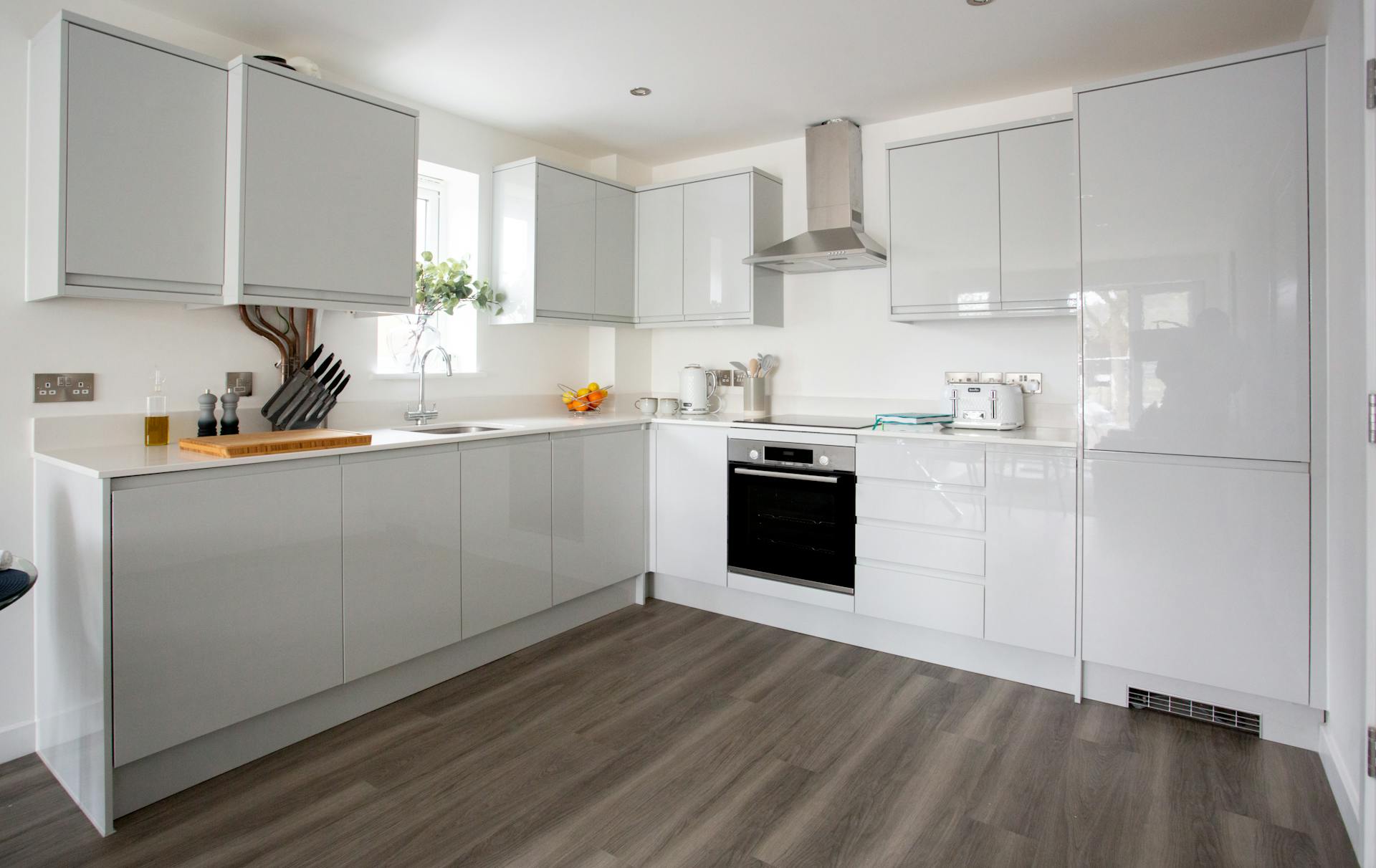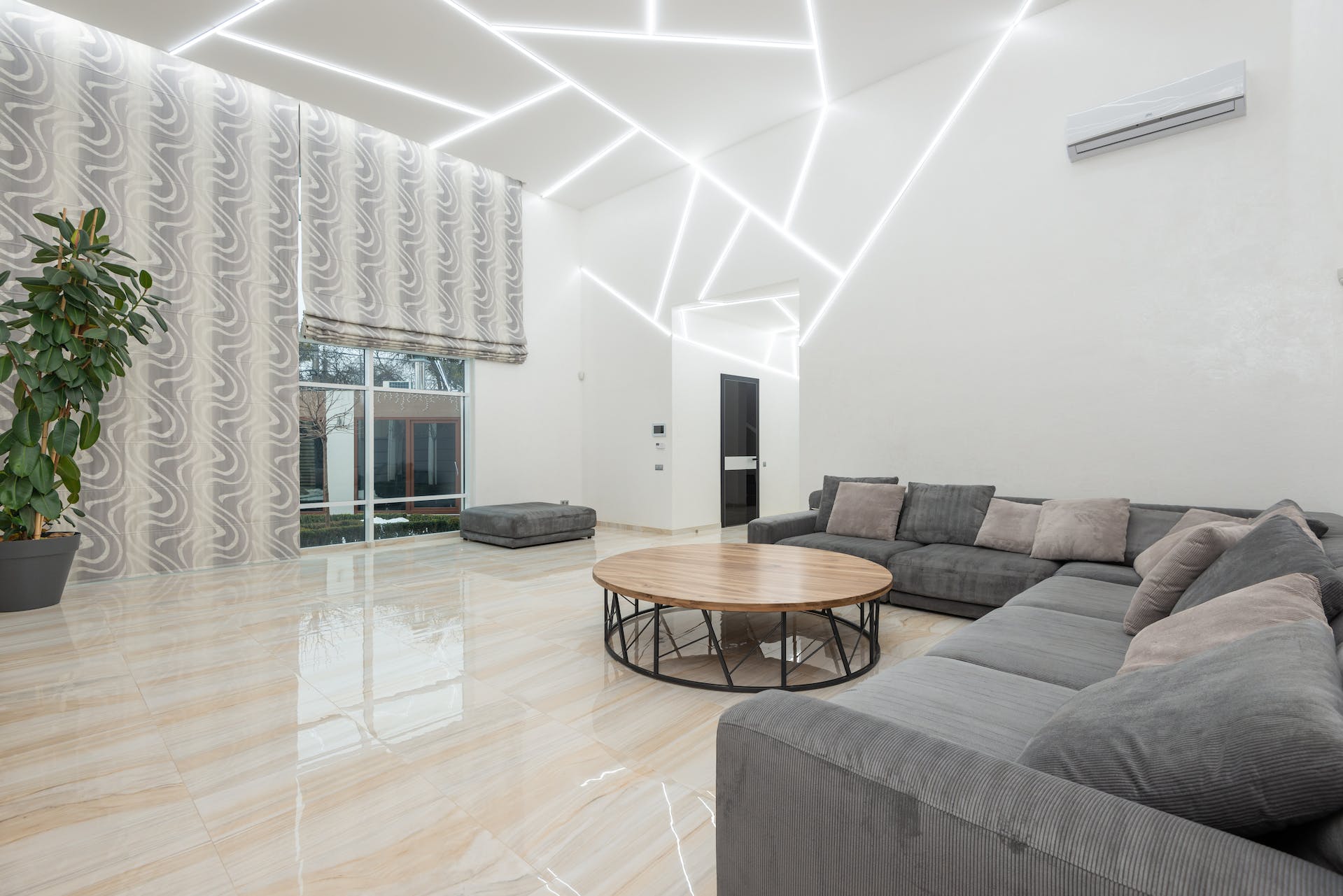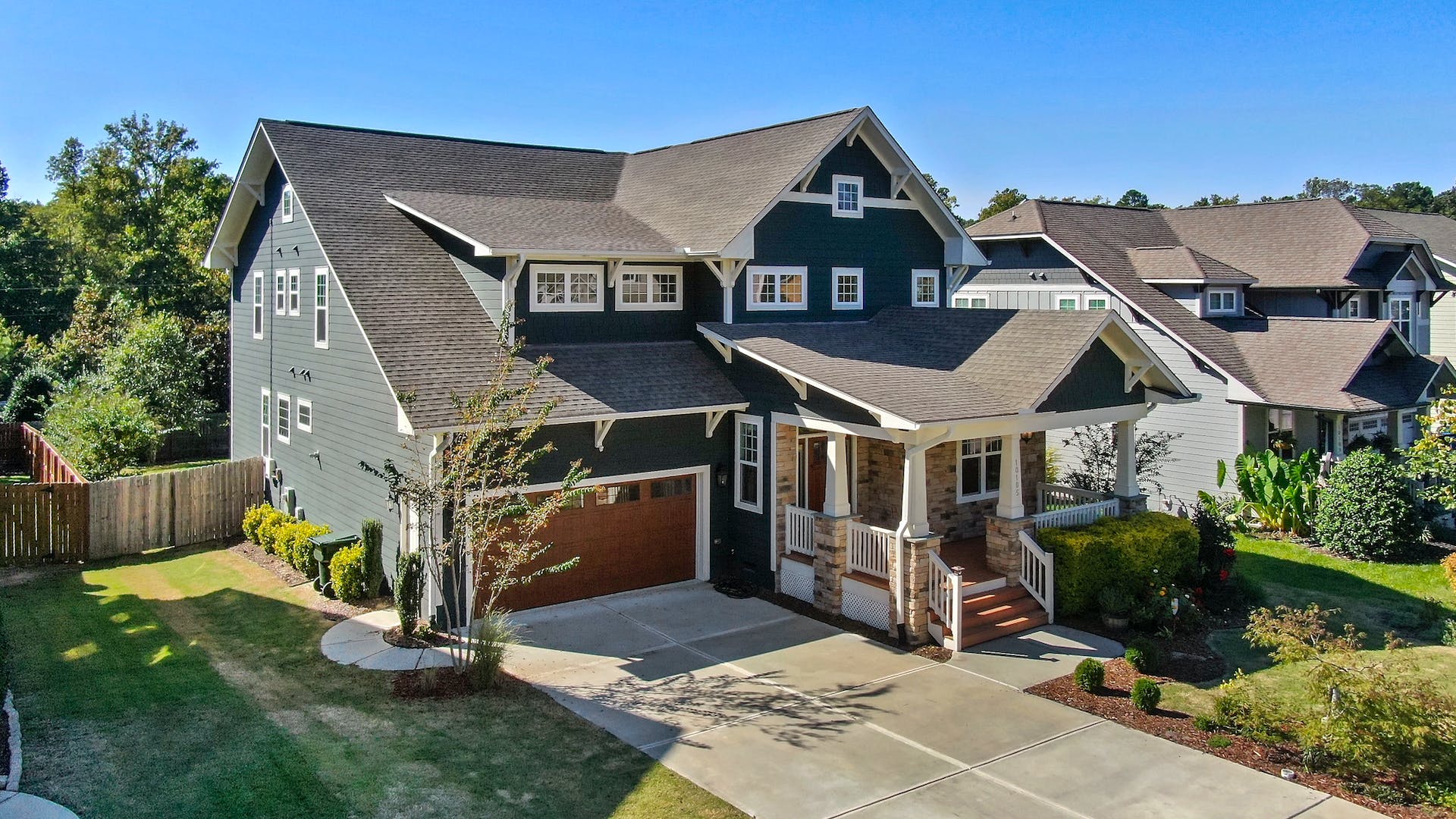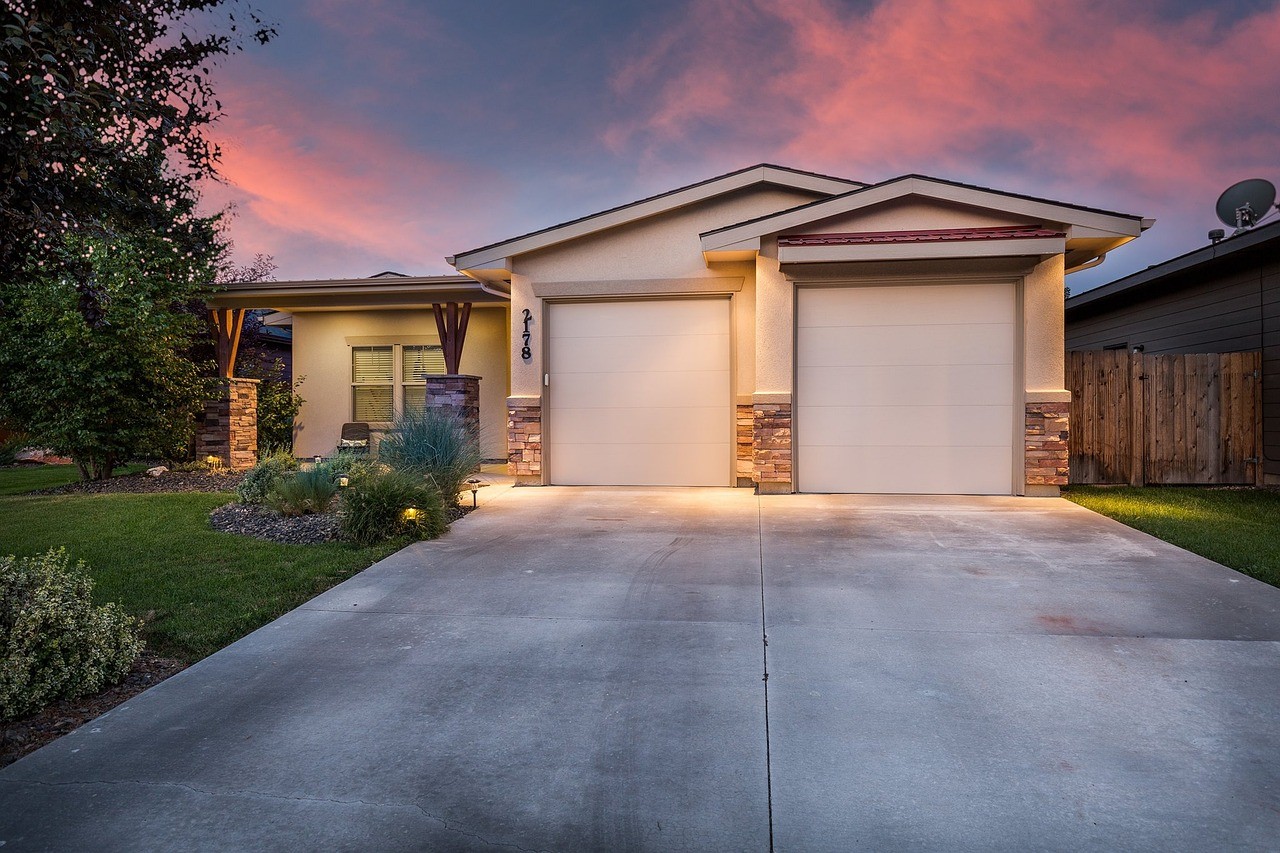In the fast-paced world of real estate, having high-quality photos can make or break a sale. As photographers and real estate professionals, we must stay current with the latest photo editing techniques.
Understanding crucial real estate photo editing terms helps us enhance property images effectively and efficiently. With the right tools and knowledge, we can present properties in the best light, attracting more potential buyers and closing deals faster.
1) HDR Blending
HDR blending is a key technique in real estate photo editing. It stands for High Dynamic Range. This process combines multiple photos taken at different exposures into one image.
We begin by selecting the images we need. In software like Lightroom, we group these images into a stack. This makes it easier to manage them.
Next, we use processes like exposure blending or infusing to merge the images. This technique balances the light and dark areas. It results in a more detailed photo.
For those using Lightroom, there are specific steps to follow. We can select images, right-click, and choose the stacking option. Then, we blend the exposures using tools like LR/Enfuse.
Using specialized HDR software like Photomatix Pro can also enhance our results. This software is powerful for real estate photo editing, offering many effects for a better outcome.
2) Sky Replacement
Sky replacement is a popular technique in real estate photo editing. It involves swapping out a dull or overcast sky with a more vibrant and appealing one. This can greatly enhance the overall look of property photos.
We select the sky in an image and then replace it with a new sky that fits the scene. This process can be done in photo editing software like Photoshop. It’s important to ensure that the new sky looks natural and blends seamlessly with the rest of the image.
Realtors value sky replacement because a clear blue sky makes properties look more inviting. This can draw more potential buyers’ attention and increase interest in the listings.
Editing the sky can also adjust colors and shadows to match the new sky. This step helps to maintain a consistent and realistic appearance throughout the photo. Blue sky replacement is especially useful for outdoor shots and images with visible windows showcasing the outdoors.
3) Perspective Correction

Perspective correction is a crucial technique in real estate photo editing. It helps in making images of rooms and buildings appear true to life.
We often face the challenge of capturing interiors and exteriors without distortions. Vertical lines in photos might tilt, making walls and structures look unstable.
Using software like Adobe Photoshop or Lightroom, we can straighten these lines. The upright transform tools available in these programs are highly effective.
By correcting the angles, we ensure that the photos reflect the actual space. This makes a property more appealing to potential buyers.
For example, if a door frame appears to lean in the image, we can adjust it so it looks straight and symmetrical. This small adjustment can make a big difference.
Perspective correction also involves adjusting horizontal lines. By aligning floors and ceilings properly, photos look more professional.
Learning these techniques can significantly improve our real estate photography. It’s a valuable skill that enhances the overall presentation of a property.
4) Color Correction
Color correction is crucial in real estate photo editing. Our goal is to create images with accurate and consistent colors.
The process usually starts with adjusting the white balance. This step ensures that whites look white and other colors appear natural. We often use a white balance selector tool for this adjustment.
Next, we focus on correcting exposure. This involves adjusting brightness and contrast to ensure that all details are visible, especially in poorly lit spaces.
We also address color casts. These are unwanted hues that can distort an image, often caused by different light sources. By correcting these casts, we ensure that the colors in the photo are true to life.
In some cases, we need to enhance specific colors to make certain features pop. For example, making the green of a lawn more vibrant can make an exterior shot more appealing to potential buyers.
Accurate color correction improves the visual appeal of real estate photos. Consistent and balanced colors can make a property more attractive to potential buyers.
5) Twilight Conversion
Twilight conversion transforms daytime real estate photos into captivating twilight images. This editing technique gives properties a warm, inviting glow that can attract potential buyers.
We start by selecting a high-quality daytime image. Using advanced photo editing software, we replace the sky with a twilight version. This involves blending warm colors like orange, pink, and purple into the sky.
Next, we adjust the lighting on the property. We enhance exterior lights to make them appear as if they are glowing. This adds a realistic touch and emphasizes the property’s features.
We improve the overall mood by tweaking shadows and highlights. This helps to create depth and a sense of realism in the images. Small adjustments like these make a significant impact.
An important aspect is balancing the color temperature. We ensure the colors are neither too warm nor too cold, which can distract from the overall appeal. Accurate color correction is key here.
Combining all these steps, twilight conversion creates stunning images that enhance the property’s appeal. This technique is widely used in real estate to make listings stand out. For more detailed information, you can explore this resource.
6) Virtual Staging
Virtual staging is a game-changer in real estate photography. We can transform empty rooms into fully furnished spaces using digital tools. This makes properties look more appealing to potential buyers.
There are several virtual staging services available. For example, companies like Phixer offer photorealistic staging starting for FREE on your first staging. Their fast turnaround time of 24-48 hours helps us get listings up quickly.
By using virtual staging, we can make a property stand out. It allows us to highlight the full potential of a space without the hassle of physical staging. This tool is especially helpful for vacant homes, making them look inviting and lived-in.
Virtually staging a home can cost anywhere from $72 to $360, depending on the number of rooms. According to NAR, buyers prioritize staging the living room, primary bedroom, and kitchen. This can help keep our expenses in check while maximizing the impact of our listings.
7) Object Removal
Object removal is a crucial skill in real estate photo editing. It allows us to eliminate unwanted elements from photos. This might include small appliances, clutter, or other distractions.
To start, we open the image and create a new layer. This ensures any editing won’t affect the original photo. Then, we use tools like the Clone Stamp. This tool helps us cover the unwanted parts with pixels from other areas.
Larger items may require more advanced techniques. For example, using the Content-Aware Fill in Adobe Photoshop can seamlessly blend the area around the removed object.
It’s essential to scan the photo first. This helps us decide which objects need removal and what parts to clone. Planning ahead ensures a smoother editing process.
When editing exterior photos, we might also need to remove cars or people. We can follow similar steps—analyze, duplicate the image, and use the appropriate tools. For more detailed steps, check out these simple editing techniques.
8) Image Sharpening
Image sharpening is key to making real estate photos visually appealing. It enhances edges, making details pop. This can draw attention to features like architectural lines or textures.
By sharpening images, we can differentiate between various elements within the photo. This helps potential buyers see the finer details in a property.
Effective image sharpening can be achieved using tools like Adobe Photoshop or Lightroom. These tools offer precision in adjusting sharpness levels.
Balancing sharpness is crucial. Over-sharpening can introduce unwanted noise or artifacts. It’s a fine line to walk, but the results are worth it for crisp and clear photos.
In the competitive real estate market, sharp images can be our secret weapon. They help our listings stand out, attracting more attention from potential buyers. Real estate buyers often make quick judgments based on photos, so sharp visuals can make a significant impact.
Using sharpening tools correctly can significantly improve our property images, making them look professional and inviting. Implementing the right techniques ensures our real estate photos are clear and eye-catching, increasing the appeal of the properties we showcase.
9) Noise Reduction
Noise is the grainy texture that often appears in photos taken in low light or with high ISO settings. This can make real estate photos look unprofessional and distract from the property’s features.
We use various techniques to reduce noise in images. One common method is using noise reduction filters in software like Photoshop. These filters can smooth out graininess without losing important details.
Another effective approach is selective editing. This allows us to target and reduce noise in specific parts of an image while preserving the sharpness elsewhere. This method is particularly useful for retaining details in architectural features.
Noise reduction is especially important in real estate photography where clear, crisp images can make a significant difference. High-quality photos help potential buyers see properties in their best light, improving the overall appeal and potentially speeding up sales.
Choosing the right technique and tools for noise reduction is key to achieving the best results. We always aim to balance noise reduction with maintaining detail and sharpness in our real estate photos.
10) Lens Correction

Lens correction is crucial in real estate photography. When we use wide-angle lenses, which are common in property photos, they often cause distortion. This makes straight lines appear curved or skewed. Correcting this distortion ensures the property looks natural and appealing.
Professional editing software like Lightroom and Photoshop offer tools for lens correction. We can manually adjust the settings or use built-in profiles for specific lenses. These profiles automatically correct common distortions based on the lens used.
Fixing lens distortion improves the photo’s composition. Straight walls and undistorted furniture give a realistic view of the space. This helps potential buyers visualize the property accurately. By making these adjustments, we enhance the overall quality of our real estate photos. This is a simple but vital step in our editing process.
11) Flash Ambient Blending
Flash Ambient Blending, or Flambient, is a popular technique in real estate photo editing. This method combines flash and ambient lighting to create balanced and appealing images.
We start by taking multiple shots of the same scene—some with flash and some using natural light. The flash photos capture crisp details, while the ambient photos provide softer lighting and atmosphere.
Using an editing program like Photoshop, we open the different shots as layers. We make sure the ambient layer is on top of the flash layer. By changing the blending mode to Luminosity, we merge the layers. This reveals the best parts of each photo.
Additional adjustments are often needed to perfect the image. We might add a blank layer and change its blending mode to Color. This step helps correct any color imbalances, making the final photo look natural and vibrant.
Mastering Flash Ambient Blending can make a significant difference in real estate photography. The technique ensures that photos showcase the property in the best light possible. For a detailed tutorial, consider visiting The Quickest Flambient Blending in Real Estate Photo Editing.
12) Exposure Correction

Exposure correction involves adjusting the brightness of an image. This ensures that real estate photos are neither too dark nor too bright.
We often start by assessing the image’s histogram. This graph shows the tonal range of the photo from dark shadows to bright highlights.
If an image is underexposed, we increase the exposure to brighten the shadows. This makes details in darker areas more visible.
For overexposed images, we decrease the exposure to bring back details lost in the highlights. Balancing both prevents any area from being washed out or too dark.
Exposure correction is crucial in real estate photography. It helps to portray the property accurately, making rooms look naturally lit and inviting.
We can also use exposure correction to create a consistent look across multiple photos of the same property. This uniformity is key for a professional presentation.
In our editing software, exposure sliders are commonly used tools. These allow precise adjustments to the overall brightness.
Understanding and applying exposure correction can significantly enhance the quality of real estate photos. It’s a fundamental skill in any real estate photographer’s toolkit.
13) White Balance Adjustment
White balance adjustment is crucial for representing colors accurately in real estate photos. It’s about making sure whites look white, not tinted with other colors. This helps the entire photo look natural.
We can adjust white balance in the camera settings before we take photos. Most modern cameras have options like daylight, cloudy, tungsten, and fluorescent.
Adjusting white balance during post-processing is also efficient. In Photoshop, we can use the Color Balance tool. This tool lets us tweak the colors so they look more accurate.
Real estate photos need accurate colors to show properties as they are. Incorrect white balance can make rooms look too cool or too warm, which can be misleading. We ensure consistency in our photos by always checking and adjusting the white balance.
Making these adjustments helps in capturing spaces in their true light, making the property more appealing to potential buyers. For more detailed steps on adjusting white balance in Photoshop, you can visit this tutorial.
14) Vignette Addition
Vignette addition is a popular photo editing technique where we darken the edges of an image. This draws attention to the center and highlights the subject.
In real estate photography, adding a vignette can make rooms look cozy. It subtly frames the space, making the main features stand out.
We use vignettes to guide the viewer’s eyes toward important elements in the photo. It helps create a focal point, enhancing the overall aesthetic.
To add a vignette, we usually use photo editing tools like Adobe Photoshop or Lightroom. These tools offer precise control over the vignette’s strength and shape.
The key is to keep the vignette subtle. Overdoing it can make the image look unnatural. A slight darkening of the edges is often enough to achieve the desired effect.
In some cases, a reverse vignette (where edges are lightened instead) can be used to create a different visual impact. It all depends on the mood we want to create.
Vignette addition is versatile. Whether it’s interior shots or exterior views, this technique can be applied to enhance various types of real estate photos.
15) Image Cropping

Image cropping is a fundamental part of real estate photo editing. It helps us remove unwanted areas from an image, bringing the focus to the property itself.
By cropping, we can improve the composition. This ensures that the elements of the photo are balanced and aesthetically pleasing.
Proper cropping helps highlight the property’s best features. For example, we might cut out distracting objects or unnecessary background elements that don’t add value.
We also use cropping to adjust the aspect ratio. This is important for different platforms where the photos will be displayed, such as websites or social media.
Cropping can also help correct horizon lines or framing issues. If a photo is slightly tilted, cropping can help straighten it out, enhancing the photo’s professional look.
When done right, cropping can significantly boost the visual appeal of real estate photos. This makes the property more attractive to potential buyers.
It’s important to always keep the final use in mind when cropping. Each platform might have different requirements for image dimensions and aspect ratios.
16) Room Additions

Room additions are an essential part of real estate photo editing. When editing these photos, we focus on making the new space blend seamlessly with the existing structure. This includes matching colors, lighting, and textures.
We often use tools like perspective correction to ensure that the new room looks natural. This helps maintain consistent lines and angles throughout the image.
Another important aspect is color correction. We adjust the colors to match those of the current rooms, creating a cohesive look. This makes the entire property appear uniform and well-integrated.
Lighting adjustments are also crucial. We make sure the lighting in the added room matches the rest of the house. This involves balancing shadows and highlights to create a natural effect.
Finally, we use techniques like blending to hide any inconsistencies between the old and new sections. This ensures that viewers see a seamless transition, making the addition look like part of the original design.
17) Panorama Stitching
Panorama stitching is essential for creating wide, seamless images of properties. This technique combines multiple photos into one expansive view.
We use software like Adobe Photoshop and Luminar Neo to stitch images together. These tools ensure that the individual photos align correctly and blend smoothly.
It’s important to maintain a consistent overlap between shots, around 30-50%. This overlap helps the software recognize common points between the images.
After stitching, we adjust the exposure and color balance to ensure consistency across the panorama. This step is crucial to avoid visible lines or mismatched colors in the final image.
Using panorama stitching, we can showcase extensive properties or large rooms, giving potential buyers a better perspective. This approach captures more detail than a single shot. This method is invaluable in modern real estate photography for creating immersive and detailed visuals.
For more detailed information, check out the guide on panorama stitching.
18) Virtual Tour Creation

Creating a virtual tour is a crucial part of modern real estate marketing. It allows potential buyers to explore properties without physically being there.
First, we need to prepare our equipment. This includes choosing the right camera and a stable tripod. A 360-degree camera is often the best choice for capturing all angles of a space.
Next, we decide on the type of virtual tour we want to create. Options include video tours, interactive 3D tours, and panoramic photo tours. Each has its unique benefits depending on the property and target audience.
Once we have our equipment ready, it’s time to plan the shots. We should make sure every room is well-lit and tidy. It’s important to consider the flow of the tour, guiding viewers seamlessly from one room to another.
After capturing the footage, we use virtual tour software. Popular choices include Matterport, Zillow 3D Home app, and Asteroom. These programs help us stitch the images or videos together and create an immersive tour.
We then upload the final virtual tour to our website or listing platform. This allows potential buyers to view the property at their convenience, increasing the chances of a successful sale.
19) Digital De-Clutter

Digital de-clutter is an essential part of real estate photo editing. It involves removing unwanted items or distractions from photos. This helps in making the property look cleaner and more appealing to potential buyers.
In today’s market, a well-presented property can make a big difference. We use advanced tools to clear out clutter from images. This can include removing personal items, cleaning up messy spaces, or even erasing unwanted objects that distract from the property’s main features.
Virtual staging is also a helpful method to de-clutter images. This technique lets us add or remove furniture and decor digitally. It shows the space in its best light without the distraction of unnecessary items. By de-cluttering digital photos, we make the property more attractive to buyers.
Removing clutter from images can improve a listing’s appeal. When potential buyers see a clean, open space, they’re more likely to become interested in the property. Make sure to use these techniques to present real estate in the best way possible. For more detailed methods on decluttering, check out how to declutter photos for real estate.
20) Photo Enhancement
Photo enhancement is crucial in real estate photography. It involves making photos look their best through various editing techniques. These methods include adjusting brightness, contrast, and sharpness.
We use advanced tools to enhance the visual appeal of property photos. High-quality images attract potential buyers and can lead to quicker sales. Simple tweaks can make a home more inviting and appealing.
Combining multiple techniques like HDR editing and color correction helps highlight the best features of a property. This process brings out details that might be missed in a standard photo.
Understanding Real Estate Photo Editing

High-quality real estate photos are crucial for property listings. Effective photo editing can enhance these images, making them more appealing to potential buyers. Key areas to focus on include the importance of high-quality imagery and the various software tools used by professionals.
The Importance of High-Quality Images
Real estate photos need to capture a property’s best features to attract buyers. High-quality images help listings stand out. Photos should be bright, clear, and accurately represent the property.
Good lighting is essential. Proper exposure ensures that images are neither too dark nor too bright. Clear images without noise are crucial. Noise reduction tools can help in maintaining the photo’s clarity, especially in low-light conditions.
Another key element is composition. Photos should highlight the property’s strengths. Angles and perspectives matter. Using techniques like perspective correction can make rooms look larger and more appealing. By emphasizing key features, such as architectural details, we draw the viewer’s eye to the best parts of the property.
Common Software and Tools
Several software options are available for real estate photo editing. Adobe Photoshop and Lightroom are popular choices for many professionals. These tools offer advanced features such as color correction, exposure adjustment, and selective editing.
For specific tasks, there are specialized tools. Examples include Noise Ninja for noise reduction and PTGui for panoramic stitching. Knowing which tool to use for each task can significantly improve the efficiency and quality of photo edits.
Using the right software and tools helps ensure our photos look professional, ultimately making real estate listings more attractive to buyers.
Techniques for Professional Real Estate Photo Editing
We’ll focus on color correction and image enhancement to ensure your real estate photos look polished and professional.
Color Correction
Color correction is crucial for making photos look natural and appealing. The first step involves adjusting the white balance. Proper white balance ensures that colors are true to life. Settings may vary, but typically you’ll aim for neutral tones.
Next, we need to address any color casts. A color cast can make an image look unrealistic. Using software like Photoshop, we can neutralize any unwanted tints. Pay close attention to the color of walls and floors as these are most prone to color inaccuracies.
Finally, adjust the saturation and vibrance. While saturation affects all colors equally, vibrance will enhance muted colors while leaving already vibrant colors less affected. This helps in keeping the photo balanced and natural-looking.
Image Enhancement
Enhancing the image involves several steps. One key technique is adjusting exposure. Getting the exposure right means images are neither too dark nor too light. This often requires fine-tuning of highlights and shadows.
We should also consider contrast and brightness settings. Increasing contrast can make an image pop, but be careful not to lose detail in the process. Trimming the brightness might be necessary to avoid overexposure, particularly in well-lit areas.
Another important aspect of enhancement is cleaning up the image. We use the clone stamp tool in Photoshop for this task. This helps remove any unwanted objects from the frame. Straightening vertical and horizontal lines is essential for a polished and professional look.
Frequently Asked Questions

As real estate photo editors, we often get asked about the best practices and common issues in the field. Here, we address the essential steps, preferred software, lighting techniques, and common mistakes to help you excel in real estate photography.
What are the essential editing steps to enhance real estate photographs?
The essential steps include HDR blending, sky replacement, perspective correction, color correction, and twilight conversion. These techniques improve the quality and appeal of property images.
Which software is preferred by professionals for real estate photo editing?
Professionals often use Adobe Lightroom and Photoshop for their advanced features. Other popular tools include Photomatix for HDR and Luminar for AI-based enhancements.
What are the key lighting techniques in editing to make property images more appealing?
Balancing interior and exterior lighting is crucial. Techniques like exposure blending, adjusting brightness and contrast, and using flash to fill shadows help create well-lit photos that look inviting.
Can you list the most common mistakes to avoid in real estate photo editing?
Common mistakes include over-saturation, poor perspective correction, neglecting shadows, and inconsistent color correction. These errors can make photos look unrealistic and less appealing to potential buyers.
How do perspective correction and image stitching contribute to real estate photography?
Perspective correction ensures that vertical lines appear straight, making the image look more professional. Image stitching combines multiple photos to create a wide-angle view, essential for showcasing large spaces.
What are the best practices for balancing interior and exterior lighting in real estate photos?
Using HDR blending helps balance different lighting conditions. It’s essential to adjust the exposure levels and use flash appropriately. Editing tools like Lightroom can fine-tune lighting to ensure both interiors and exteriors are well-lit and visually appealing.
